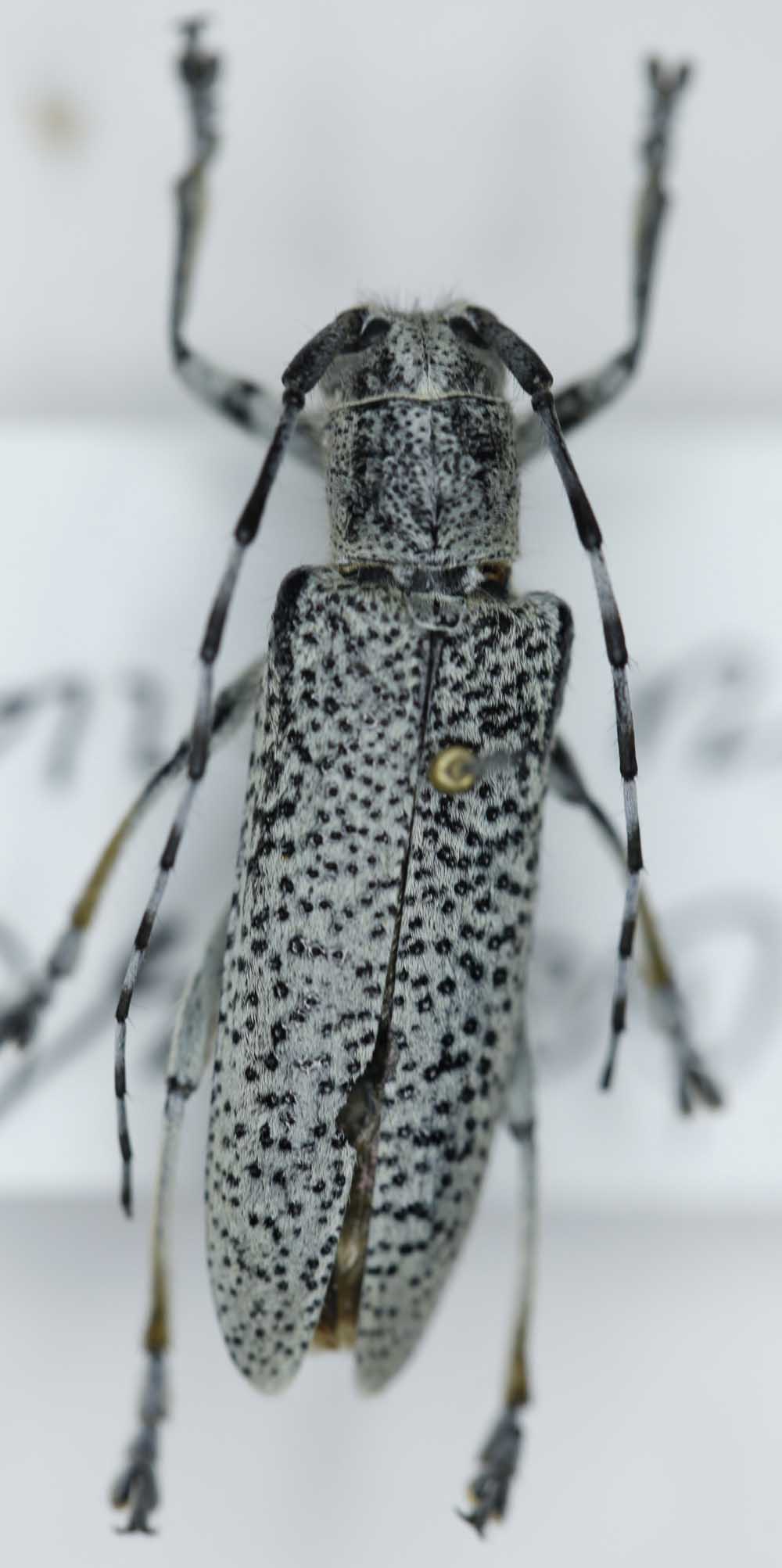| T O P I C R E V I E W |
| nasa |
Posted - 14/05/2016 : 11:51:43

116áKB
From Xinjiang, NW China.
Thanks!
Is it Saperda populnea? |
| 9 L A T E S T R E P L I E S (Newest First) |
| Francesco |
Posted - 20/05/2016 : 21:15:37
Saperda similis var. albopubescens Pic, 1925 would be a good ID (here a picture).
This species reaches the Kazakhstan and Xinjiang is not very far from it. |
| Max |
Posted - 20/05/2016 : 20:10:55
It`s not S. populnea, I sure. More similar to whitish form of S. similis but with more darkened joints of antenna. This species can be quite variable in size.
And small remark about populnea\balsamifera. Motschulsky`s "description" :
"312) Compsidia populnea. L. Pz. Fn. 69. 7.
Dans la Siberie orientale.
Les exemplaires de Mongolie sont cependant plus etroite et plus allonges que ceux de l`Europe, avec des taches moins nombreuses est une pubescence moins serree sur les elytres, ce qui fait paraitre l`insecte de couleur plus noiratre; les angles humeraux sont moins saillants, le corselet plus court. - El parait vivre sur le Populus balsamifera et en consequence l`ai nommee Comps. balsamifera."
C'est tout. 
I don`t see any differences between populnea from European part of Russia and ex. from Far East (as balsamifera). |
| Xaurus |
Posted - 18/05/2016 : 00:18:42
I agree with you Francesco, hard to believe what they do esp. some of our Russian colleagues, they describe each population even in middle Europe, unbelievable  ?? ??  |
| Vitali |
Posted - 16/05/2016 : 09:48:58
Saperda carcharias is a large species with strong shoulders. This one is not. Interesting species. |
| nasa |
Posted - 16/05/2016 : 09:07:59
I think it should be Saperda carcharias according to the Fig.158 in book of Pu (1980).

108.14áKB

117.79áKB |
| Francesco |
Posted - 15/05/2016 : 12:53:28
However, they lack in American subspecies. |
| Xavier |
Posted - 15/05/2016 : 11:21:45
 ?? never see this form without yellow spot ?? never see this form without yellow spot |
| Francesco |
Posted - 15/05/2016 : 10:11:03
quote:
Originally posted by Xavier
quote:
Is it Saperda populnea?
No 
But it cannot be something else.
This group was complicated by the imprudent description if Compsidia gilanense (sic!) Shapovalov, 2013, where Shapovalov provided some strange statements: resurrection of Compsidia (without reasons), synonymy of S. balsamifera with S. populnea, restoration of S. moesta as a true species.
Actually, according to Wallin, the aedeagus of Russian specimens of S. populnea looks different from that of Scandinavian and West specimens, which actually correspond to that of moesta of Shapovalov's paper.
Shapovalov's paper is available here. |
| Xavier |
Posted - 14/05/2016 : 19:46:16
quote:
Is it Saperda populnea?
No  |


